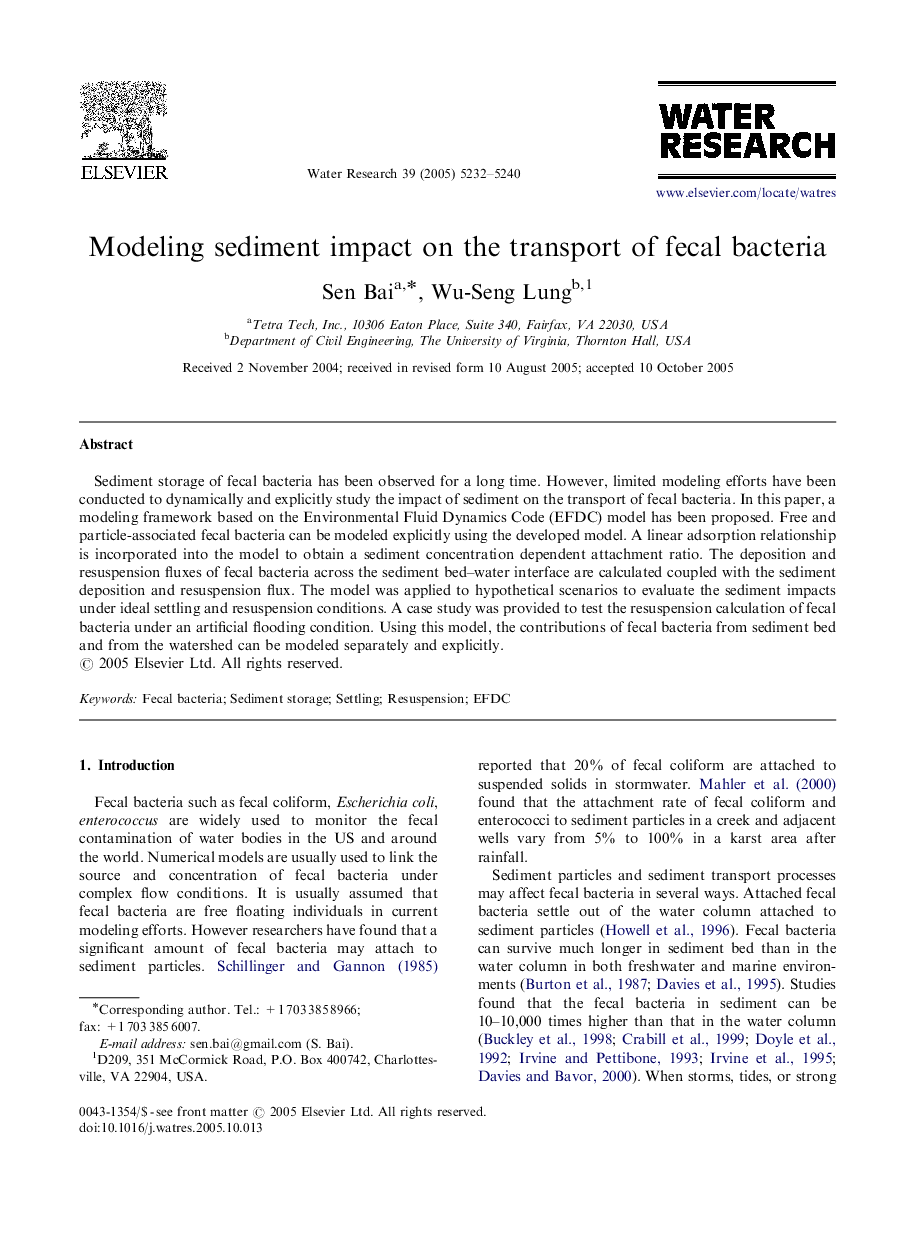| Article ID | Journal | Published Year | Pages | File Type |
|---|---|---|---|---|
| 4487495 | Water Research | 2005 | 9 Pages |
Sediment storage of fecal bacteria has been observed for a long time. However, limited modeling efforts have been conducted to dynamically and explicitly study the impact of sediment on the transport of fecal bacteria. In this paper, a modeling framework based on the Environmental Fluid Dynamics Code (EFDC) model has been proposed. Free and particle-associated fecal bacteria can be modeled explicitly using the developed model. A linear adsorption relationship is incorporated into the model to obtain a sediment concentration dependent attachment ratio. The deposition and resuspension fluxes of fecal bacteria across the sediment bed–water interface are calculated coupled with the sediment deposition and resuspension flux. The model was applied to hypothetical scenarios to evaluate the sediment impacts under ideal settling and resuspension conditions. A case study was provided to test the resuspension calculation of fecal bacteria under an artificial flooding condition. Using this model, the contributions of fecal bacteria from sediment bed and from the watershed can be modeled separately and explicitly.
